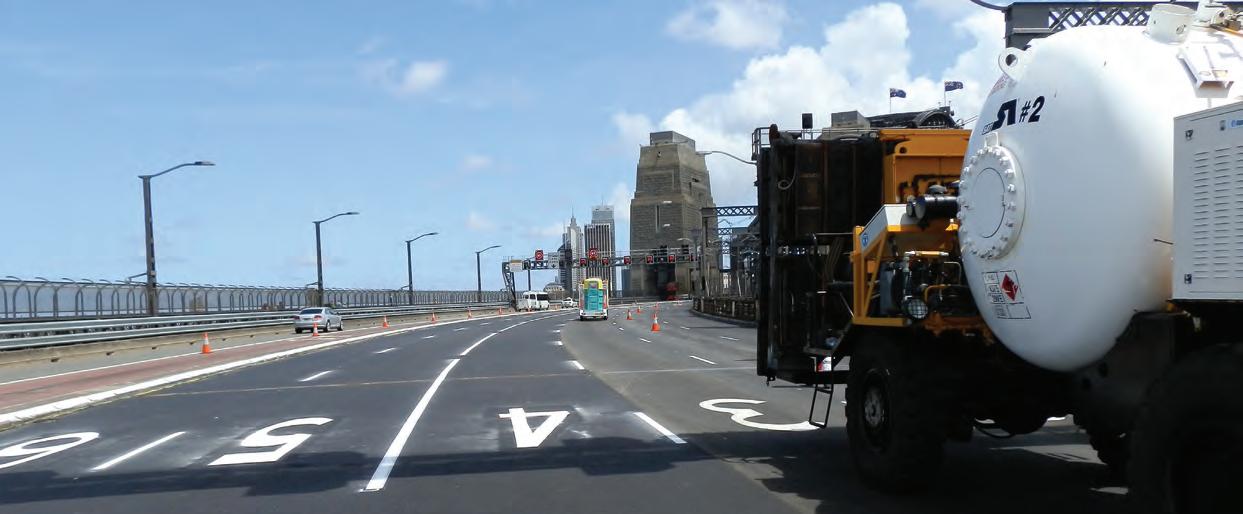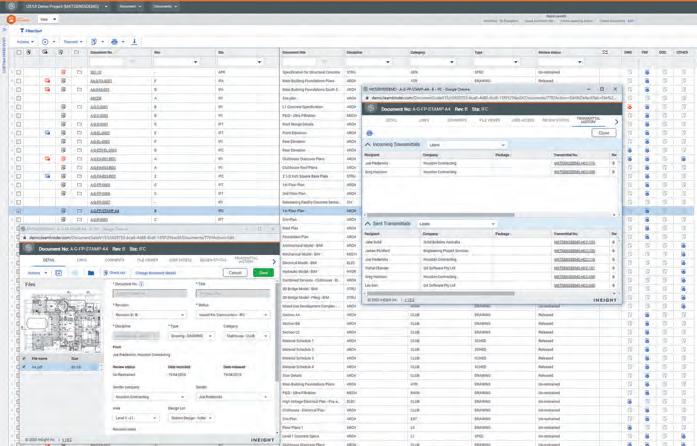
6 minute read
In-stock batch plants
CONCRETE MOBILITY
IN A COMPANY-FIRST, GOUGH INDUSTRIAL SOLUTIONS IS KEEPING A CONCRETE BATCHING PLANT – SIMEM’S ZINGO DOS – IN STOCK IN AUSTRALIA, AS THE COMPANY BELIEVES THE BATCH PLANT IS WELL SUITED FOR A WIDE RANGE OF PROJECTS. I n a report in 2014, Deloitte found from a survey that labour comprised a large percentage of cost-share in public infrastructure projects.
The survey showed cost-share of total project cost came to about 23 per cent for roads and 31 per cent for rail.
Respondents indicated that labour costs, equipment and other capital, materials, and other intermediate inputs (including subcontractors) were all significant factors in total project costs.
As a large component of the total project cost, cutting down labour requirements could be the key to winning some contracts, so long as it does not affect production or quality.
Project equipment can play a large role in reducing the number of personnel needed for operation, with streamlined processes and advanced technology.
To this end, Gough Industrial Solutions has begun to offer the Simem Zingo Dos, a semiautomated concrete batching plant, keeping it in stock for Australia.
Horst Hendrich, Gough Industrial Solutions National Key Account Manager, says the company believes there will be high demand for this plant and wants the industry to have quick access to it if needed.
“We have recently done a trip around South Australia, Victoria and NSW and we spoke to a number of smaller companies that are interested,” Mr. Hendrich says.
“It would even be suited to major companies that have a larger plant in a remote location that is only doing a small number of cubic metres of concrete per week.”
One of the major benefits of the Zingo Dos plant, Mr. Hendrich says, is that it is designed to be operated by a single person.
“The loader driver can actually operate the plant alone using a tablet, and it can produce a number of different mixes each day if required,” he says.
“All mix designs go into the batch computer and it memorises those so if a customer rings up asking for an old mix, the plant will automatically know the tolerances for that.”
The Zingo Dos can produce up to 60 cubic metres of concrete per hour and is designed to use aggregates between one and 40 millimetres, and cement and water with a temperature of 60 degrees Celsius.
“The more concrete you can produce, the more projects will open up to you. Even smaller plants may be losing out if they have to transport smaller amounts of material long distances and pump the concrete into the site, which is another cost,” Mr. Hendrich says.
“This plant is mobile, so it can be transferred to different project sites, which eliminates the need to transport the concrete long distances.”
He says the Zingo Dos is a mobile dry batching plant with wheel loader aggregates dosing. There are no foundation requirements and very minimal civil works required to get the plant up and running.
“Larger plants can require excavation and foundation laying, so the Zingo Dos reduces the overall infrastructure costs. Quite often, if you are placing the plant in the place of an older plant, we can use part of the foundations for that to secure the Zingo Dos.”
The Zingo Dos plant model includes two silos, which would typically hold generalpurpose cement powder and slag. They are mixed with the cement as part of a standard formula.
The loader driver simply has to transfer material from the ground bins into the plant.
“You can produce any concrete design with this plant and have that run for the day, or every batch could be a different design. The loader driver can simply pull up the design using the tablet,” Mr. Hendrich says.
The tablet uses a system called Simem@tic, which handles the semiautonomous plant. The operator can
Gough Industrial Solutions believes there will be high demand for its semi-automated concrete batching plant.
monitor the mix and make adjustments if needed through that software during the production process.
“Once the tolerances are entered into the system, the loader driver can see the amounts of material entering the plant and can be notified when the materials come within around two kilograms of the tolerance,” Mr. Hendrich says.
“Previously, if the mix components were entered incorrectly, you would have to go back and figure out where it went wrong and start the mix again, whereas this system monitors those tolerances automatically.”
The tablet system also eliminates the need for large control panels, an interface that is easy to navigate. A desktop solution is provided with the plant, including an airconditioned batch hut, air compressor and master control cabinet. (Tablet to be soured by the client).
“Another major benefit to Simem@tic is that it can be monitored remotely if you choose,” Mr. Hendrich says.
“Simem@tic 3.0 can also integrate with other batch systems, drawing data from client lists, mix designs and ordering systems.”
Gough is the distributor of Simem concrete batch plants in Australia, and if the customer wants, the plant can monitored by the team at Simem. This way, the owner will be emailed any maintenance issues.
“Sometimes Simem has told clients they might have a problem before they were aware anything was wrong,” Mr. Hendrich says.
He says the Zingo Dos plant would be well suited to independent operators looking to replace ageing equipment.
Gough Industrial also offers the standard Zingo batching plant, which is linear and has a fixed group of aggregate bins that are kept full by an entirely automated process.
However, the Zingo Dos is able to be quickly erected and is appropriate to Australian conditions which can often require concrete to be produced in a number of locations and to different mix designs.
“Being semi-automated, the Zingo Dos can provide Australian concrete producers with both the efficiency and flexibility they need,” Mr. Hendrich says.
In a new venture for Gough Industrial, the company has begun to keep Zingo Dos plants in stock in Australia.
Due to the versatility of the plant and its ability to adapt and be transferred for multiple projects, Mr. Hendrich is confident the plant will be in high demand.
“Because we keep the plants in stock there is no need for them to be ordered in from overseas, a process which can take months,” he says.
“We can have a plant out to a customer and fully operational on site in as little as 10 days.”
The plant is designed to be a plug-and-play model, so all electrical cables and other technology required for set-up is included in the cabinet.
“If a company ordered a plant right now, we could already give them all of the civil and electrical documents so they could plan for the set-up and be ready to install the plant in very little time,” Mr. Hendrich says.
“Keeping plants in stock is something new for Gough, but we think there will be enough interest in this plant for us to take the risk of pre-purchasing the equipment.”
A Comprehensive Approach to Roundabout Design
Specialized Software for Designing Diverging Diamond Interchanges
Get Started – access promo code R&IPROMO and save 20% on your first purchase
What our clients are saying “Right off the bat, TORUS was very user-friendly and all the menus are very straightforward. I was able to do everything I had done previously and more on that complex intersection within minutes. It took me ten minutes to do what I had done with the other software in three weeks. I’m only at the beginner level of roundabout design, so it was a learning experience for me.” “NEXUS provided huge time savings in developing initial design options. I like the fact that vehicle paths are tied to intersection geometry.”










